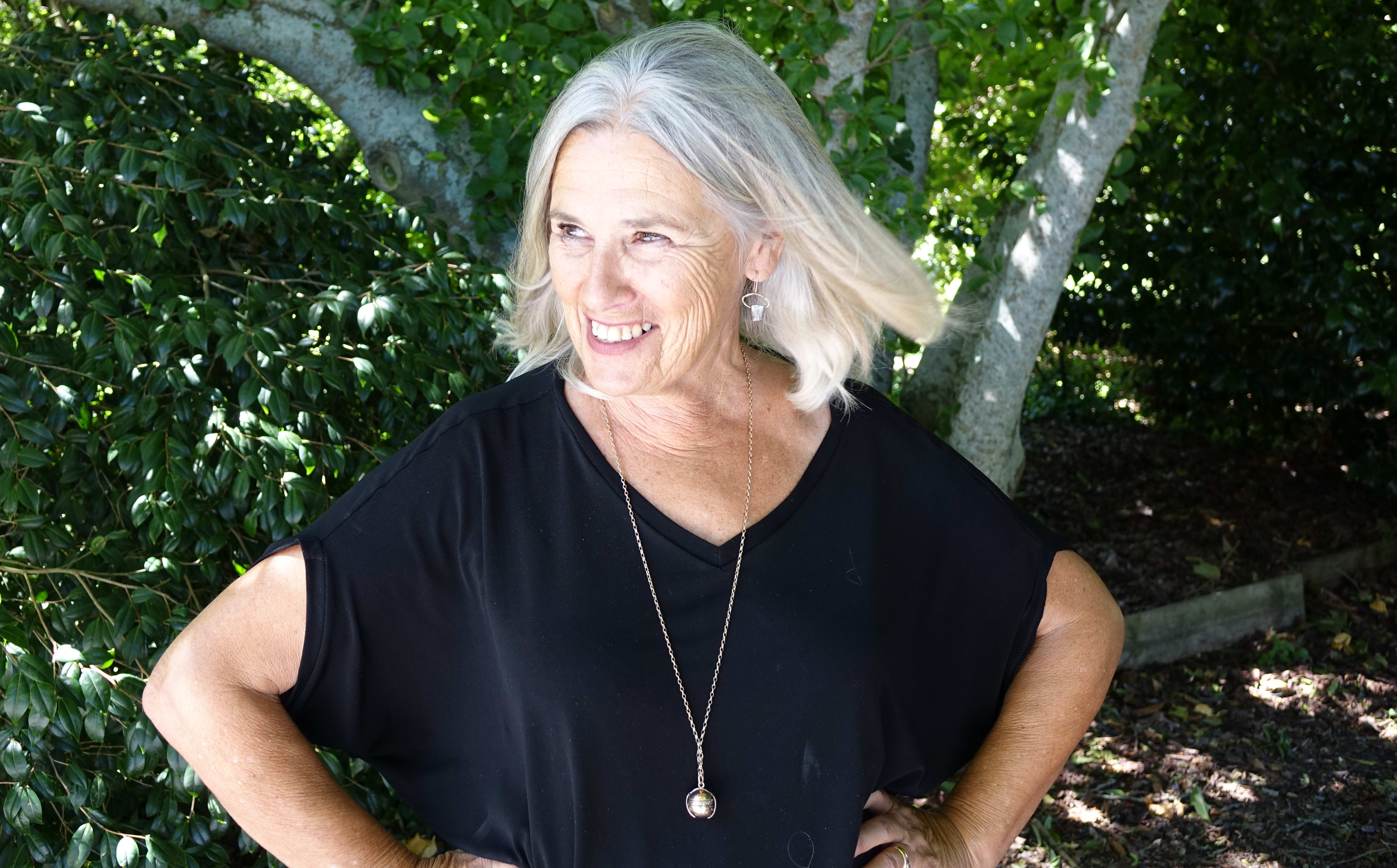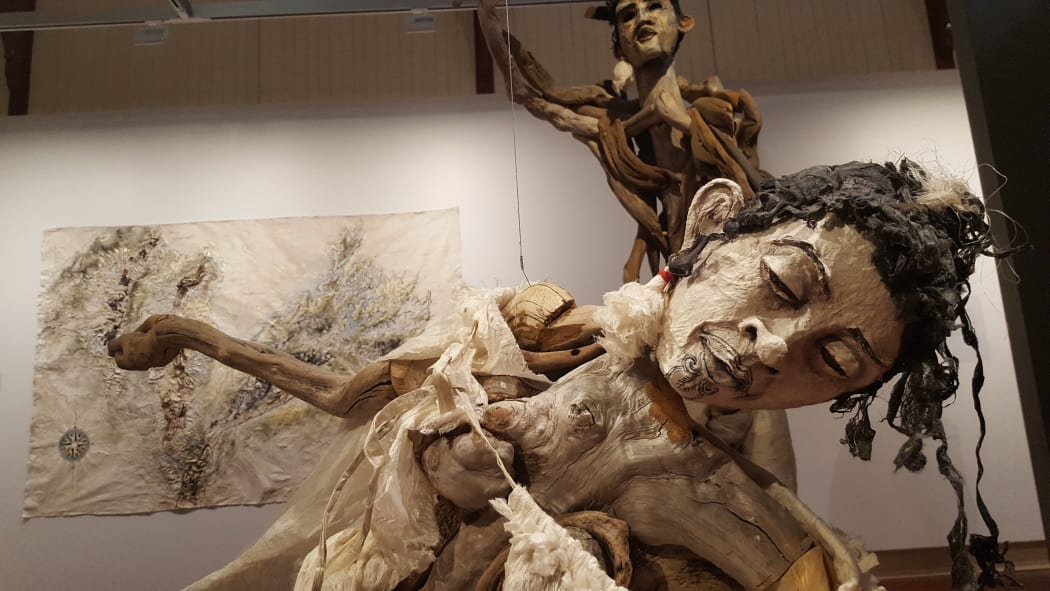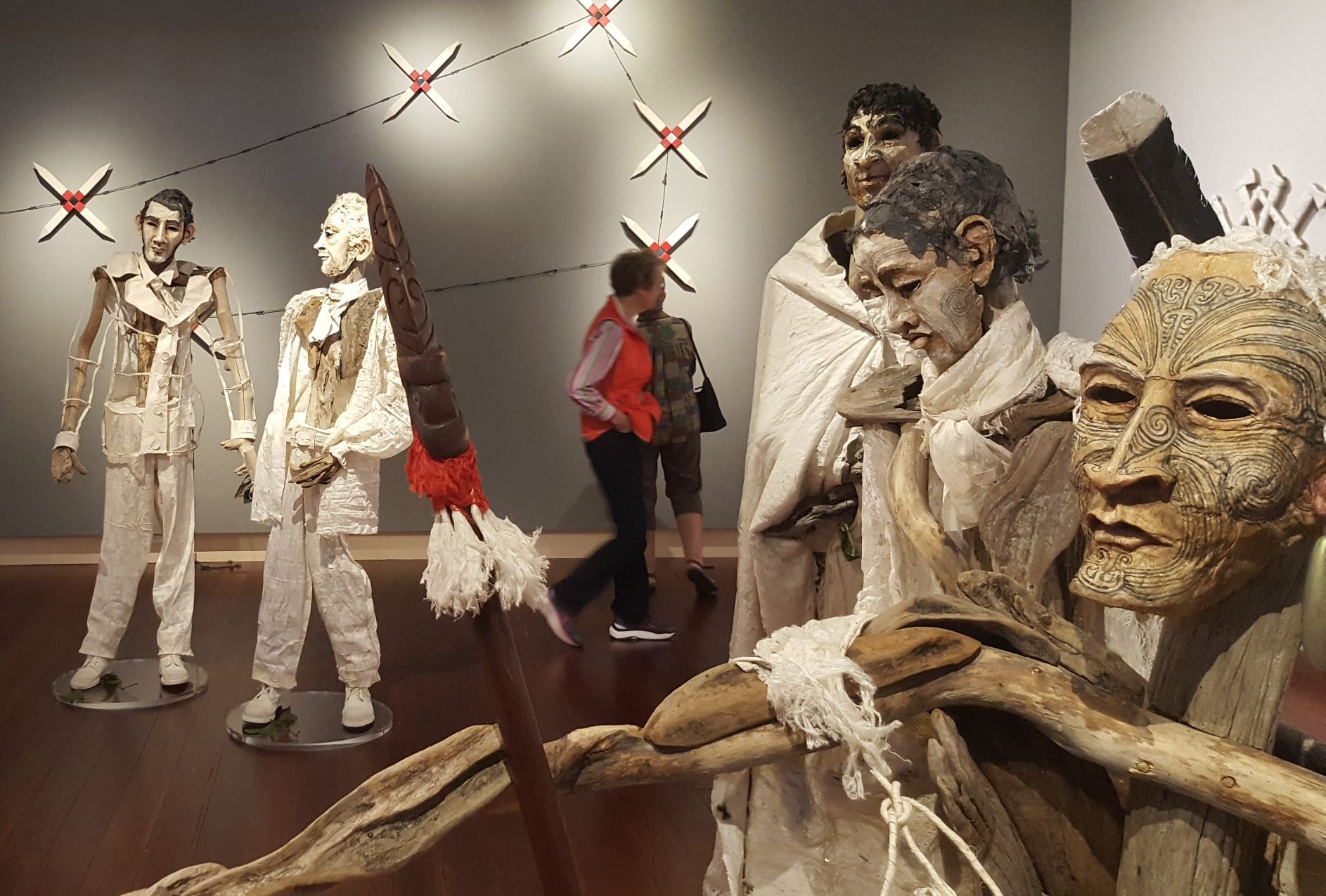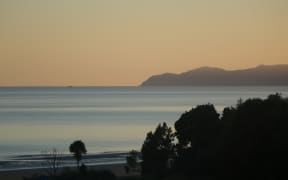An artist has cast new light on a flashpoint in Nelson-Marlborough's past.

Sally Burton Photo: Tracy Neal
Sally Burton has re-created the 1843 fatal confrontation between Ngāti Toa and early Nelson settlers in Wairau, in larger-than-life driftwood and tapa cloth characters.
They are the focus of an exhibition at Nelson's Suter Art Gallery, called Pale History - a focal point of which is the moment a chief's wife is shot and killed.
Te Rongo - the wife of Te Rangihaeata - is portrayed in the final seconds of her life, falling, resigned to her fate and perhaps the battle it would trigger.

A chief's wife falls by Sally Burton. Photo: RNZ / Tracy Neal
"I chose that moment of her being shot ... she's suspended, she's in the process of falling and it's just a dramatic moment before everything actually hit the fan, and it really became a violent and horrible incident," Ms Burton said about the Wairau incident, in which 26 people were killed.
It was the first major confrontation between Māori and the colonials since the 1840 signing of Te Tiriti o Waitangi/The Treaty of Waitangi.
One-hundred-and-seventy-four years later, the ghosts of the key players cast long shadows in a room of the Suter gallery.
The bones of the exhibition are from wood washed up by the sea and river near Ms Burton's home on the Waimea Estuary.
"I wanted to make them look as if they'd been tossed up by the Pacific Ocean with their mana intact, somehow, even though they are these strange, kind of skeletal figures dressed in tapa cloth.
"It's of the place, from the place, about the place," she said of the exhibition, which also depicts a trace of the grief the settlers grappled with. She said many were "press-ganged" into the confrontation at Wairau, and the stories of loss were now pouring out.

Sally Burton's Pale History. Photo: RNZ / Tracy Neal
Local researchers John and Hilary Mitchell have documented regional history for years, including the events leading up to and after the atrocities at Wairau.
The early Nelson settlers wanted the flat plains of Marlborough, but Te Rauparaha and his fellow chiefs said they were never for sale.
John Mitchell, a spokesman for Te Tau Ihu iwi, said the exhibition strengthened the story.
"Here is a visual interpretation of what we have tried to make public through the written word.
"For anyone who knows the personalities of the different participants - and it does come through from their own writings and what people wrote about them, she (Sally Burton) has captured them magnificently," Dr Mitchell said.
The skeletal driftwood figures have faces sculpted of tapa cloth. Ms Burton created their expressions using portraits by the colonial artist Isaac Coates - an early Nelson settler who painted Māori men, women and children in the brief time he was in the region.
"In a way that gives you an enormous amount of information about features, and moko. I tried to be as accurate as I could. Some of them were pretty faint.
"Te Rangihaeata and Te Rauparaha - they were painted many times so I had good reference for them."
Suter gallery director Julie Catchpole said the exhibition is drawing a lot of reaction, and the feedback falls into three main categories:
"Amazement, fascination, questioning. Why did this happen? Questioning ourselves and 'why don't we know more about this, and let's find out more about it'."
Ms Burton hopes the exhibition will travel north beyond Te Tau Ihu so it can draw attention to an important moment in New Zealand's history.
"This was the beginning of clashes that went on into the 1860s over land and land-grabs.
"It's an uncomfortable history about violence and I think we all need to confront it - we need to know our histories. We need to know where we've come from and where we're going."
The exhibition Pale History runs through to March. Ms Burton said if it doesn't travel, the figures were likely to be returned to the sea.



